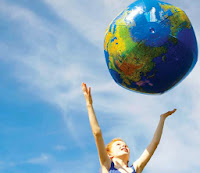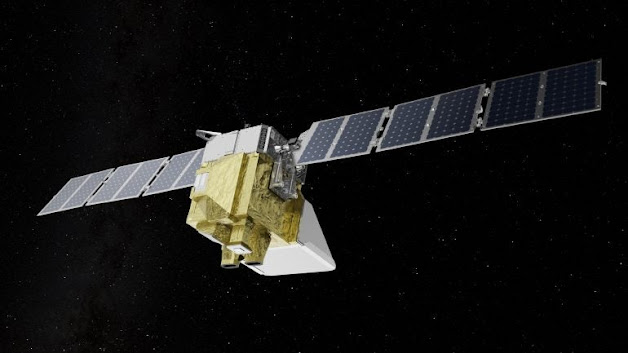The Arctic Ocean could be ‘ice-free’ within the decade, researchers warn
News Dt. 01 Feb 2024,
The
Arctic Ocean could be ‘ice-free’ within the decade, researchers warn
That troubling milestone could occur
before the end of the decade or sometime in the 2030s — as many as 10 years
earlier than previous projections, according to a study published Tuesday in
the journal Nature Reviews Earth and
Environment. The study defines “ice-free” as when the Arctic Ocean
has less than 1 million square kilometers, or 386,000 square miles, of ice.
“It’s no longer a remote possibility
that might happen at some point,” said Alexandra Jahn, the study’s lead author
and an associate professor of atmospheric and oceanic sciences at the
University of Colorado Boulder. “Unfortunately, it basically occurs under all
the emission scenarios in our climate models, so it seems like it’s going to
happen, and so we need to be ready for that.”
By midcentury — 2035 to 2067 — the
Arctic could see consistent ice-free conditions in September, the month when
sea ice concentrations are typically at their minimum, the study found.
The precise timing of such losses
depends on how soon humanity is able to reduce fossil fuel emissions that are
contributing to global warming. Under a high-emission scenario in which fossil
fuel use continues unabated, the Arctic would be ice-free between the months of
May and January by 2100, the study says.
Even under a low-emission scenario,
the Arctic would still be ice-free between August and October by that same
year.
Climate models dating to the 1970s
have long predicted the possibility of reaching ice-free summer conditions in
the Arctic under sufficient warming, but the latest research has helped nail
down just how quickly it may happen, Jahn said.
The consequences of such a change are
not yet fully understood, but considerable effects on ecological systems,
wildlife and local and global climates are likely.
“The more emissions the world puts
into the atmosphere, the more months we could see an ice-free Arctic,” Jahn
said. She added that even in a reduced emissions scenario, “children born today
will see ice-free conditions at least in September, and every couple of years
in October and August.”
The study paints a vivid picture of a
changing planet where the formerly “white Arctic” defined by its ice is
transformed into a “blue Arctic” characterized by open water.
Yet the decline of Arctic sea ice has
been well documented since at least 1979, when continuous satellite
observations began. Since then, there has been a roughly 40% loss in surface
area and a 50% loss in thickness, according to Walter Meier, a senior
researcher with the National Snow and Ice Data Center, who was not involved
with the study.
Meier said the study’s assessments
are plausible, although the most urgent finding involving an ice-free day
within the decade “may be a little aggressive.”
Still, he said, “given the emission
scenarios that we’re following, it’s really a matter of when, not if, we’ll get
ice-free conditions.”
Indeed, the study comes as the planet
continues to experience unprecedented heating driven by
climate change and this year’s El Niño, with January becoming the eighth month in a row to
experience record warmth, according to the National Oceanic and
Atmospheric Administration.
February data were not yet available,
although early findings point to continued heating,
including the warmest meteorological winter in the United States.
The global surface temperature in
January was 2.29 degrees above the 20th century average of 54 degrees, NOAA
found. Global sea ice extent was the seventh-smallest in the 46-year record at
6.90 million square miles, or 440,000 square miles below the 1991-2020 average,
for the winter month.
Jahn said some research has found
there is still a 10% to 20% possibility of avoiding an ice-free Arctic
altogether if the global temperature stays below 1.5 degrees Celsius of warming on
a 20- to 30-year mean. The 1.5-degree benchmark is an internationally
agree-upon threshold for reducing the worst effects of climate change.
“If we were to stop all emissions
tomorrow — which physically isn’t possible, but if we could — then we could
still avoid it,” Jahn said. “It’s not a guarantee, but there’s a possibility.”
But even that possibility appears to
be slipping away. In January, the global average temperature measured 1.66 degrees Celsius above the
pre-industrial reference period, according to the European Union’s
Copernicus Climate Change Service.
The implications of an ice-free Arctic Ocean — which spans an area roughly equivalent to the size of the lower 48 United States — are worrisome. According to the study, the loss of sea ice would contribute to increased wave heights, and greater coastal erosion in the region, among other things. It would also threaten the survival of ice-dependent animals such as polar bears and seals, and trigger the migration of some fish and other species.
“There’s going to be a big shift in
what kind of species we see where, and which ones end up being the dominant
ones and surviving,” Jahn said. The outlook for polar bears is especially grim
because they primarily hunt on sea ice, and “if there is an open-ocean season
for several months of the year, then polar bears just can’t survive anymore.”




Comments
Post a Comment